Parade





















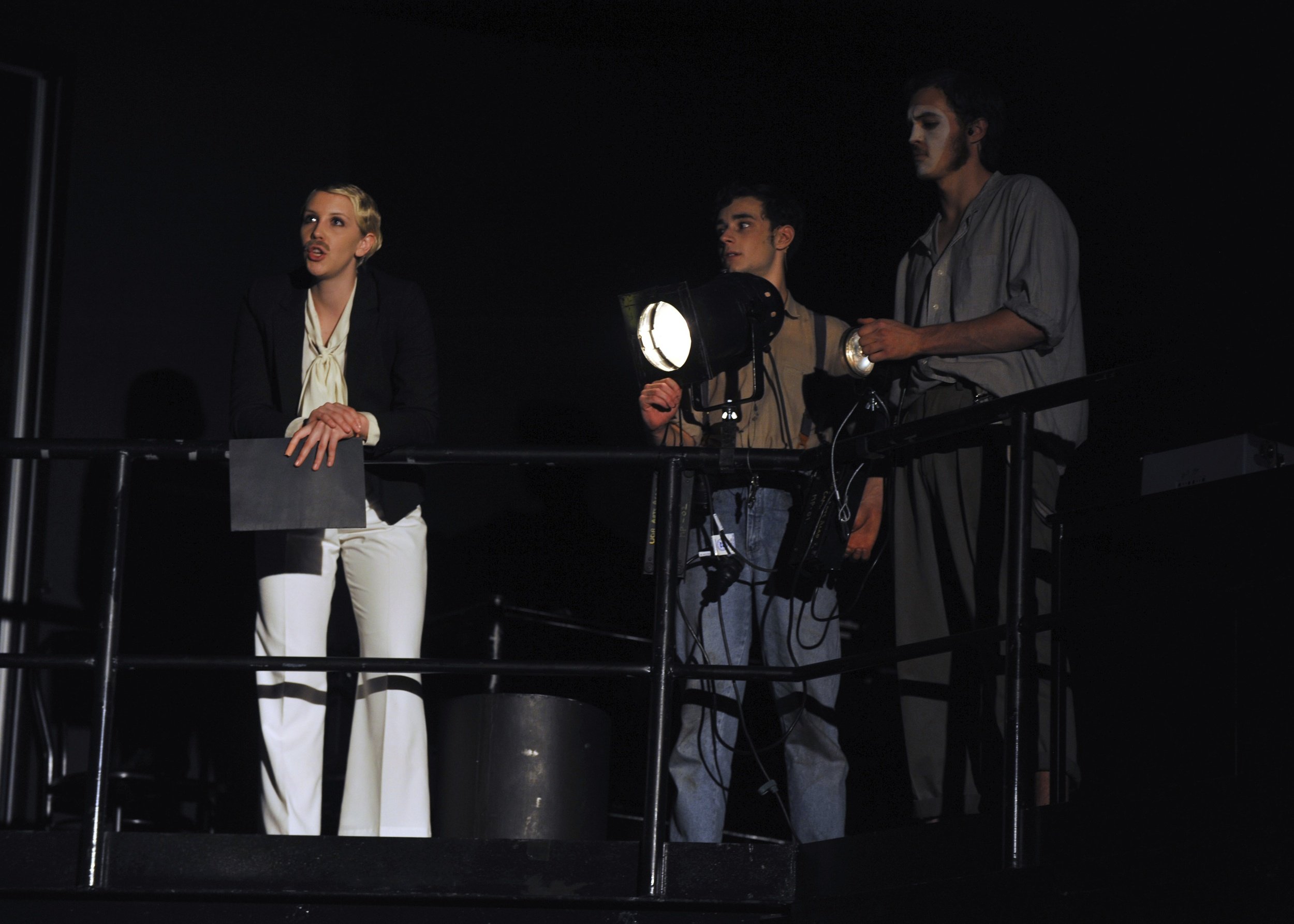






























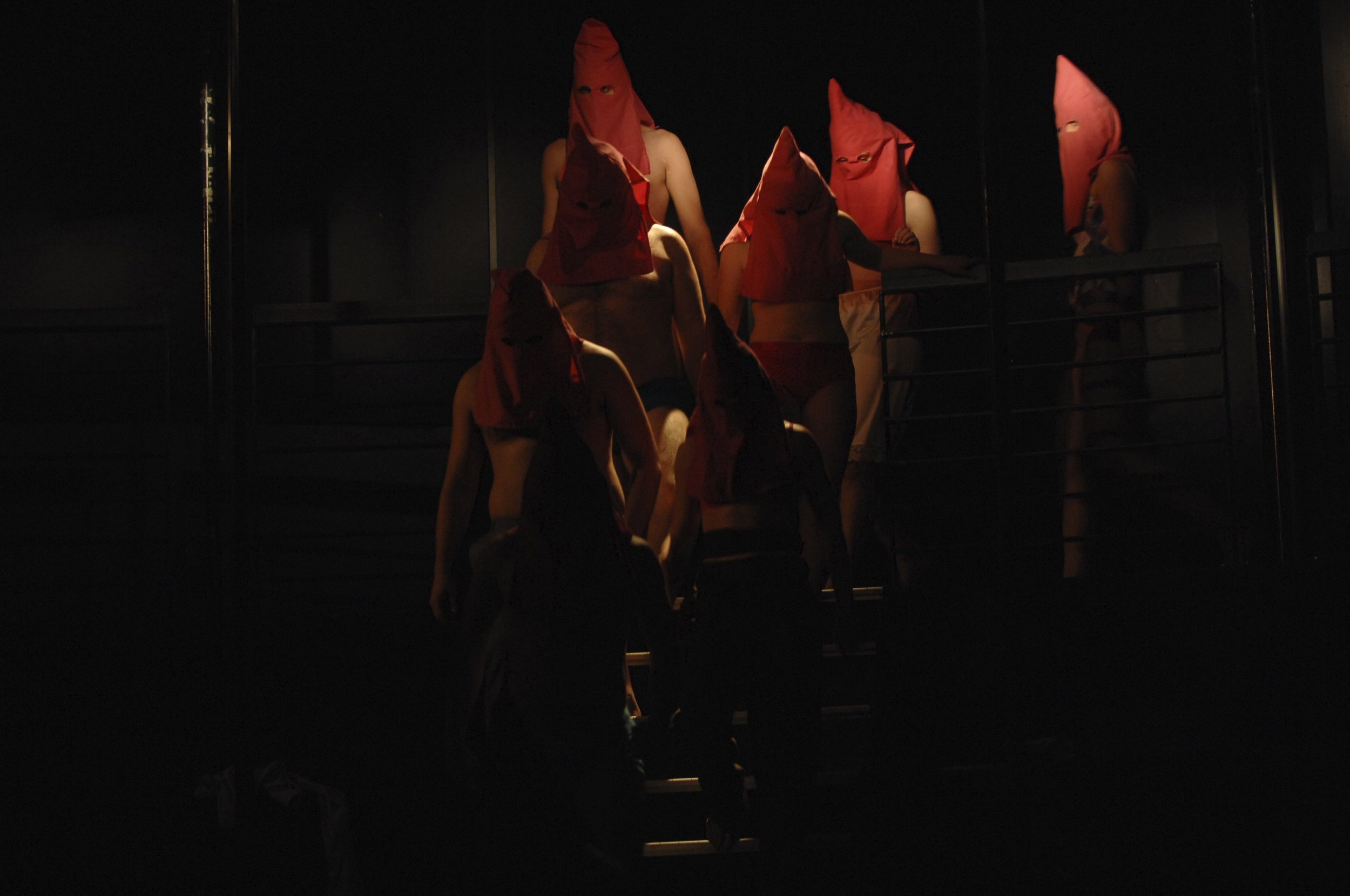














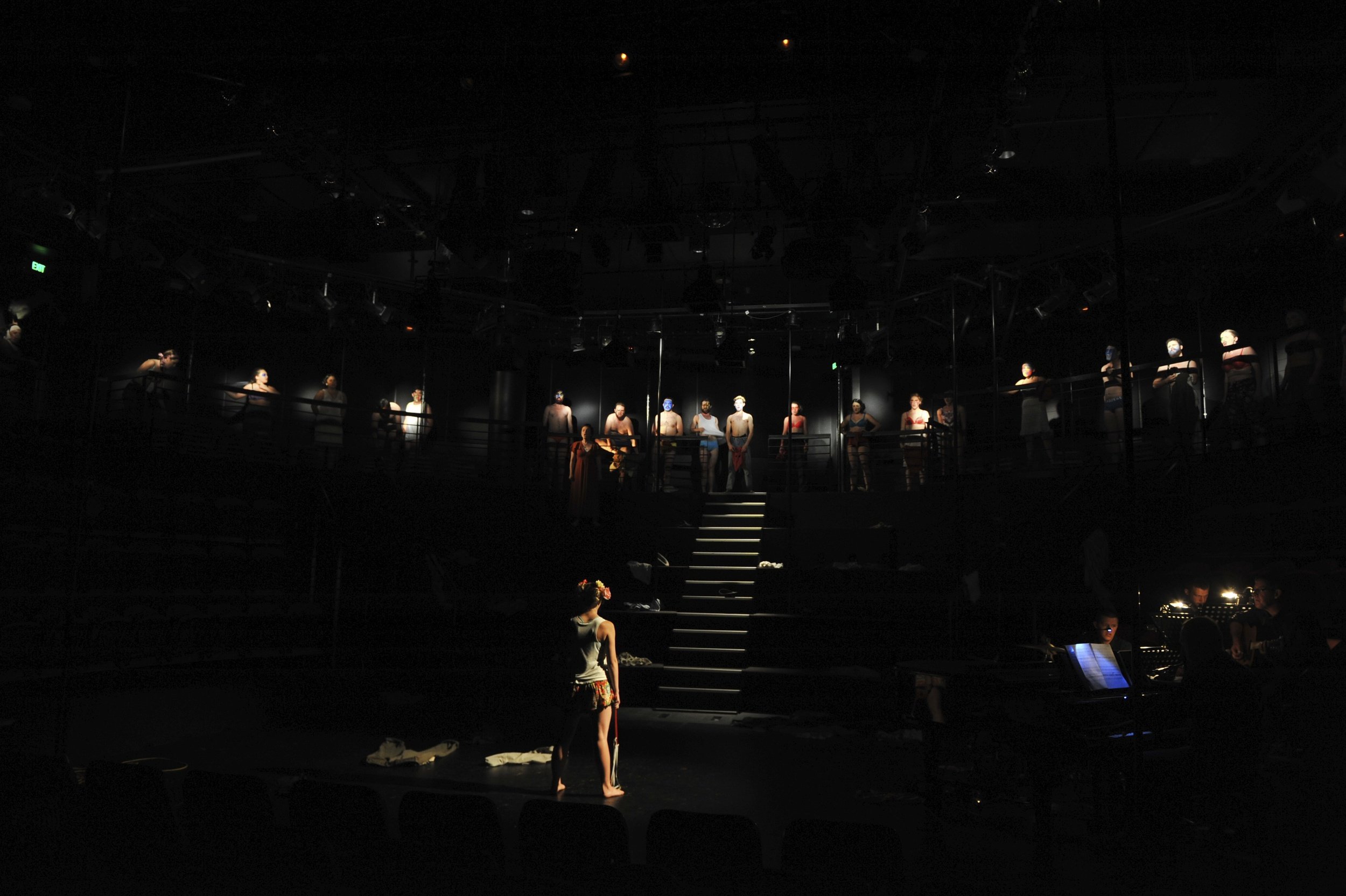





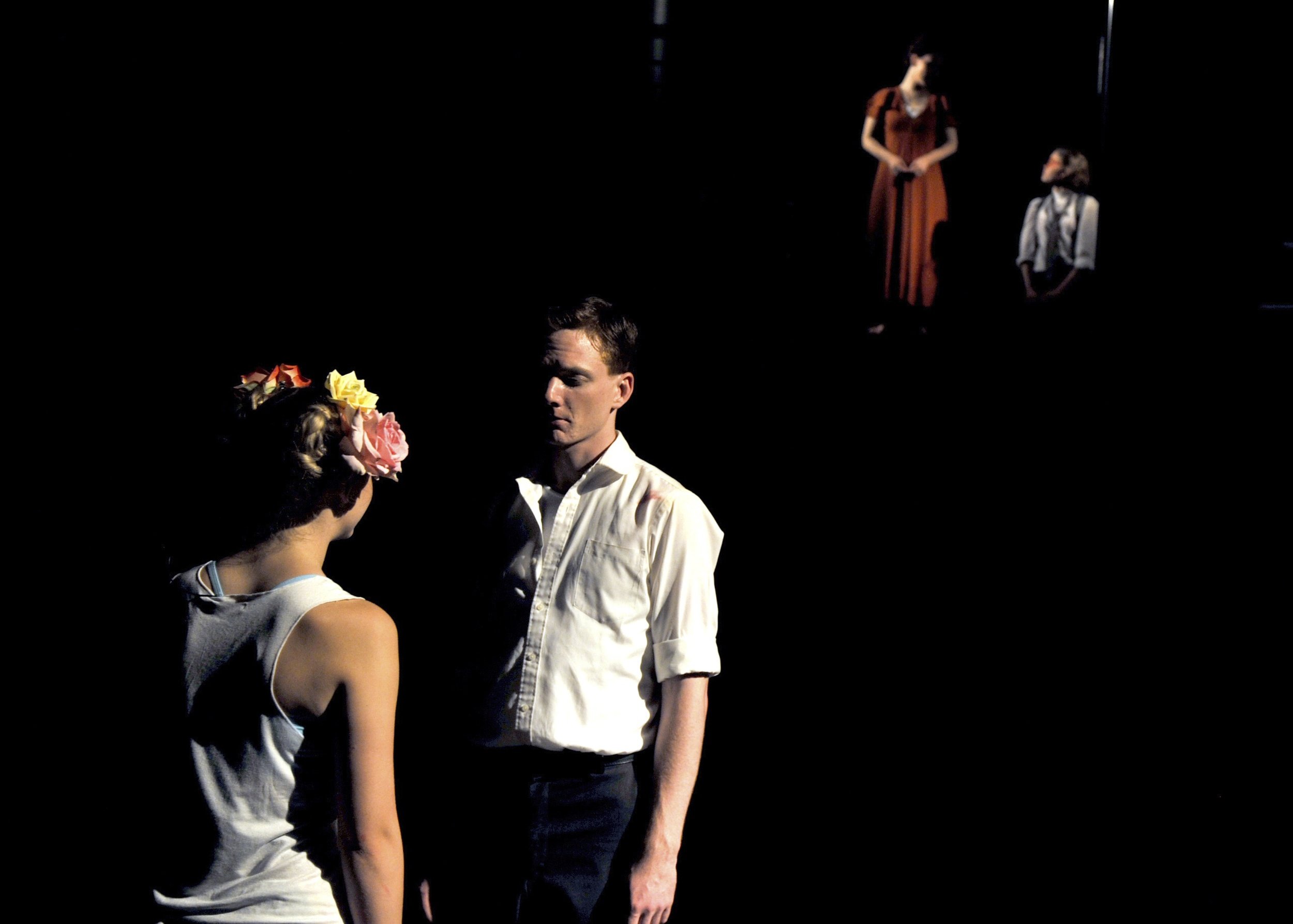


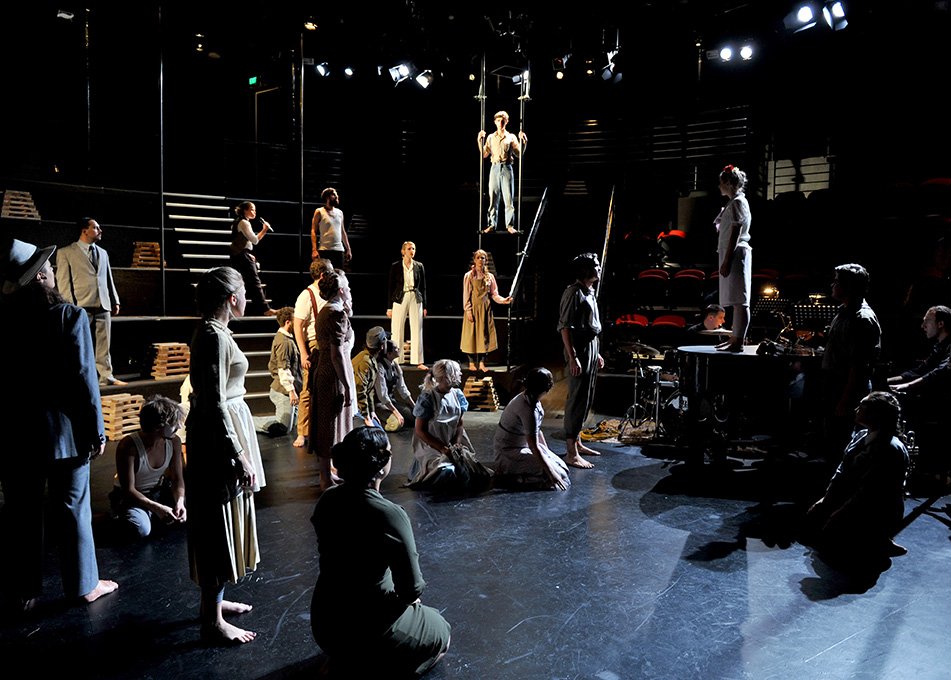
April 2013
Ballarat Arts Academy, School of Education and Arts, 2013 Graduating Music Theatre Company
Directors Bryce Ives & Nathan Gilkes
Music Directors Bryce Ives & Nathan Gilkes
Designer Rob Sowinski
Costume Designer Martelle Hunt
Photography Jodie Hutchinson
Directors Note
“You could tell that Frank is a lascivious pervert, guilty of the crime by a study of his picture: look at those bulging, satyr eyes, the protruding sensual lips; and also the animal jaw.”
Tom Watson, Publisher of The Jeffersonian
“... if the Prison Commission or the Governor undertake to undo – in whole or in part – what has legally been done by the courts that were established for that purpose, there will inevitably be the bloodiest riot ever known in the history of the South.”
The Jeffersonian, May 27, 1914
“The North can rail itself hoarse, if it chooses to do so, but if it doesn’t quit meddling with our business and getting commutations for assassins and rapists who have pull, another Ku Klux Klan may be organized to restore HOME RULE.”
The Jeffersonian, September 2, 1915
One hundred years ago the real life events of Parade unfurled in Atlanta Georgia.
In the aftermath of the American Civil War Atlanta was a bitter, divided and embarrassed city. The murder of teenage factory worker Mary Phagan and subsequent trial of Brooklyn-born factory manager Leo Frank would ignite a series of events leading to Frank’s conviction, pardoning and lynching. Fracture lines of race, religion and class would paint a much bigger picture of the United States of America. A struggle between North and South, black and white, Jewish and Christian, industrial and agrarian.
The lynching of Leo Frank sparked a darker repercussion: the emergence of the modern day Ku Klux Klan, formed in Mary Phagan’s honor.
“Art is the lie that tells the truth."
Pablo Picasso
We collaborate with the graduating music theatre students to deconstruct and develop a new, fluid and captivating imagining of the depicted real life events of 1913 Atlanta.
The musical Parade is not just a truth retold and not just a cautionary tale. It is an investigation of a collision point between old and new worlds. Each world fueled by ideals, politics, and opinions; and each fiercely fighting for survival. This work asks immediate and dangerous questions of the audience and provides the perfect backdrop to consider the America of today.
As contemporary theatre makers we must deal with the issue of race and identity. There are no African students within the school, but we are also not in the South of America and it’s not 1913. We have decided to clearly and boldly indicate that this is theatre, and have employed ensemble based theatre making techniques to tell this story in an authentic way, without trying to “present” color, race, background, gender or age.
Fox News announcer Bill O’Reilly emphatically exclaimed "The white establishment is now the minority.... it's not a traditional America anymore" on the re-election of President Obama. We hope this production questions the complexities and ambiguities of what is tradition, and what is America.
Nathan Gilkes & Bryce Ives
Directors - Parade
REVIEW
A Taste of Innovative Musical Theatre
by Amy Tsilemanis, Voice FM
In the last week I have been to see two Bryce Ives directed shows: Chants de Catacombes, staged in the old Castlemaine Gaol (amazing!) and Parade, presented by the University ofBallarat Arts Academy graduating students in the Helen Macpherson Smith Theatre. Ives has surely had some pretty intense theatremaking months working on these concurrently, and that intensity is maintained to brilliant degrees in both performances.
I don’t think I will attempt a comparative study of the two works here (interesting as that might be) but rather speak from my very limited experience of musical theatre. These are not traditional musicals by any means – the term ‘anti-musical’ was even dropped in the foyer of Parade - but I was deeply fascinated by the use of song as a storytelling tool. Usually said tool is enough to drive me mad but with these talented musicians and performers at the helm, I was utterly drawn in and thankfully, not wanting to run for the hills.
In this age, where entertainment is so readily at hand and the culture of watching a television series from start to end on dvd from your couch is the norm, a night out at the theatre is a special experience. Experiencing the opening night of Parade last night I was reminded of the immense power of narrative and character (and song!). While in my own theatremaking I often play with these concepts, I found myself drawn into the drama, on the edge of my seat, and combined with innovative staging, a simultaneously freewheeling yet choreographed sense evoked in the open and tiered playing space, and a powerful ensemble cast, it certainly was like nothing I had experienced before!
It saw the talented third year Arts Academy performers present a penetrating, colourful, and deeply ambiguous ‘epic’ reimagining of a true story of murder and corruption in America’s deep south. Intimacy and a sense of anticipation was created from the outset with performers welcoming audience into the theatre in character, placing us firmly in the world of the show, and also within the ambiguity that comes from ‘niceness’ that can quickly become menacing in the context of small towns caught up in prejudice and power play. The producers of the show suggest that the happenings depicted in Parade, based around a national commemorative holiday in the early 20th century, still hold resonance in examining the America (and world) of today.
Passionately performed music led by Nathan Gilkes and bold experiments with the body (often referencing popular culture) maintained a rolling rhythm, almost a heartbeat, throughout the production. Confident performances and a strong sense of the ensemble created a constantly shifting theatrical feast, whilst the weight of the subject matter loomed.
Building to an unexpected and riveting ending, the Howard Barker poem in the program said to inform the work seems fitting: “The audience is divided and goes home disturbed or amazed” capturing the concepts of division and ambiguity so central to the piece.
